Victories by Scandinavia and Delacroix for Aidan O’Brien and the Coolmore “Lads” in a pair of G1 races in Europe this past weekend were noteworthy for a couple of reasons:
First, these wins gave Aidan O’Brien the same number of top-level victories at this stage on the calendar as he had achieved in 2017, when he eventually surpassed Bobby Frankel’s previous record of 25 G1 wins in a calendar year and set the current standard of 28.
And second, Scandinavia’s triumph in the classic St. Leger means that with just three crops of sophomores so far to his credit, Justify has already sired the winners of all three of Britain’s colts classics — a feat which has not been achieved by a North American-based stallion since Northern Dancer did it back in 1970 thanks to the Triple Crown sweep of his son Nijinsky II.
Making Justify’s accomplishment even more impressive is that he’s done it with three different horses, after City of Troy won last year’s Derby at Epsom (also for Coolmore ownership while trained by O’Brien at Ballydoyle) and Ruling Court took this year’s 2,000 Guineas (owned by Godolphin — sadly he subsequently passed away from laminitis just recently).
Scandinavia and Delacroix (who won the Irish Champion Stakes on Saturday for his second G1 of the year; Scandinavia was also winning his second G1) are both homebreds for Coolmore. Scandinavia, as mentioned, is a son of the U.S. Triple Crown winner Justify, whose breeding rights were purchased by Coolmore for an alleged $60-$80 million and who stood the 2025 breeding season for a live foal fee of $250,000. Delacroix, meanwhile, is a son of the Godolphin/Darley stallion Dubawi (this fact — combined with Godolphin’s racing the Justify-sired Ruling Court to classic success this spring — indicates that the prior reciprocal boycotts by the two global Thoroughbred superpowers on each other’s stallions is now over; though Ruling Court was a 2YO breeze-up auction purchase, rather than the product of a mating to Justify by Godolphin).
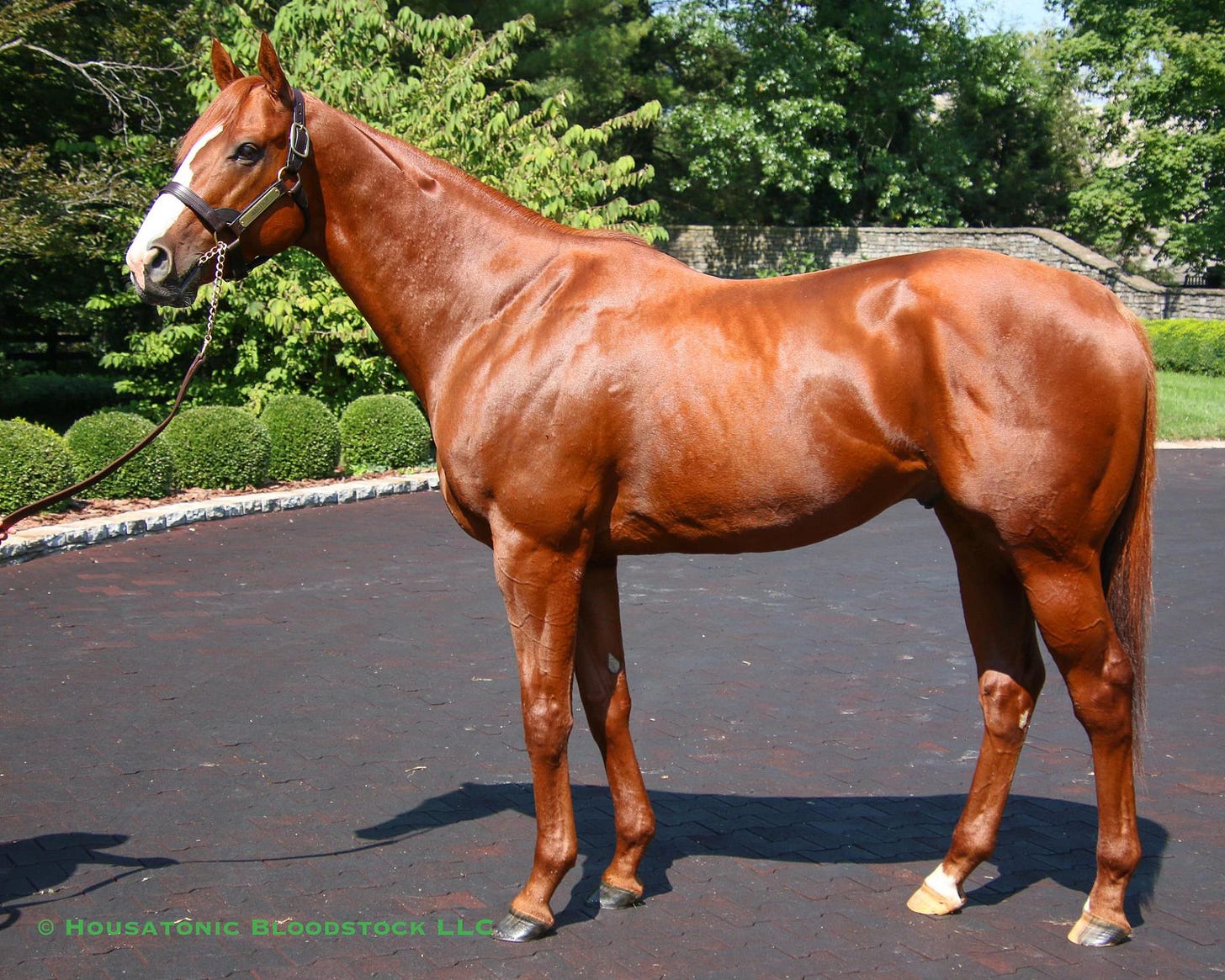
As has been noted by many in the U.K. bloodstock media, by Aidan O’Brien himself, and by Michael Tabor (along with John Magnier and Derrick Smith, one of the Coolmore “Lads”), and in light of his strong race record, Delacroix’s pedigree makes him highly desirable to Coolmore as a stallion prospect. That’s because, as a son of Dubawi out of the American-bred broodmare Tepin (she by Bernstein), Delacroix is an outcross for all of Galileo-sired broodmares in the Coolmore broodmare band.
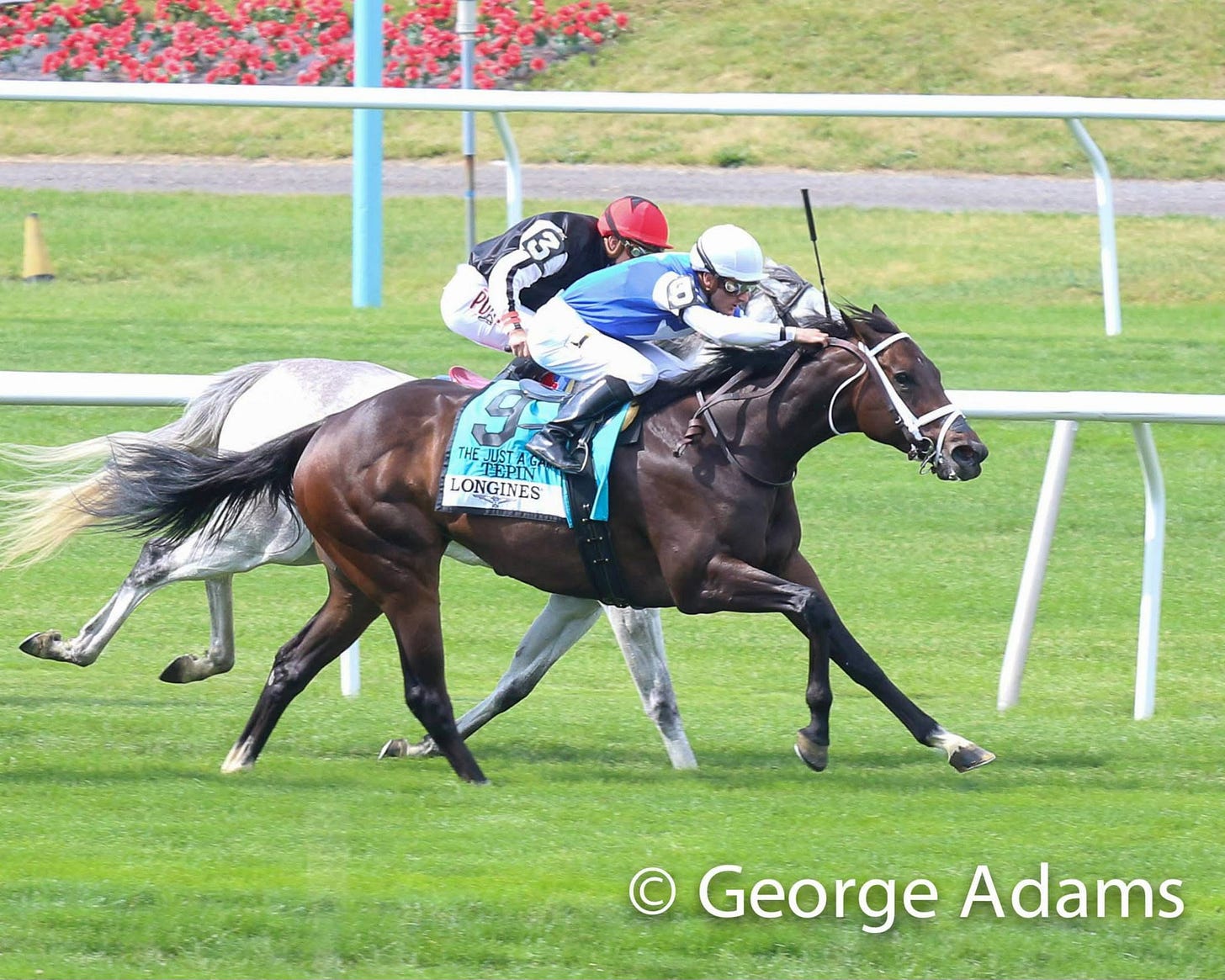
This same fact is what made Coolmore willing to spend so much for Justify, as well, since he’s by Scat Daddy and out of a Ghostzapper mare, with no sign of Galileo, his sire Sadler’s Wells, or the other almost-omnipresent European stallion, Danehill.
And in fact, Scandinavia’s own dam — named Fabulous — is a daughter of Galileo, as is City of Troy’s. (For good measure, Ruling Court’s dam is a daughter of High Chaparral, another Derby-winning son of Sadler’s Wells just like Galileo.)
Fabulous, in turn, is a half-sister to the former Ballydoyle “Iron Horse” Giant’s Causeway, who was bred by Coolmore, and stood at stud at both their Irish and American farms during his breeding career, during which he attained a trio of North American Leading Sire titles.
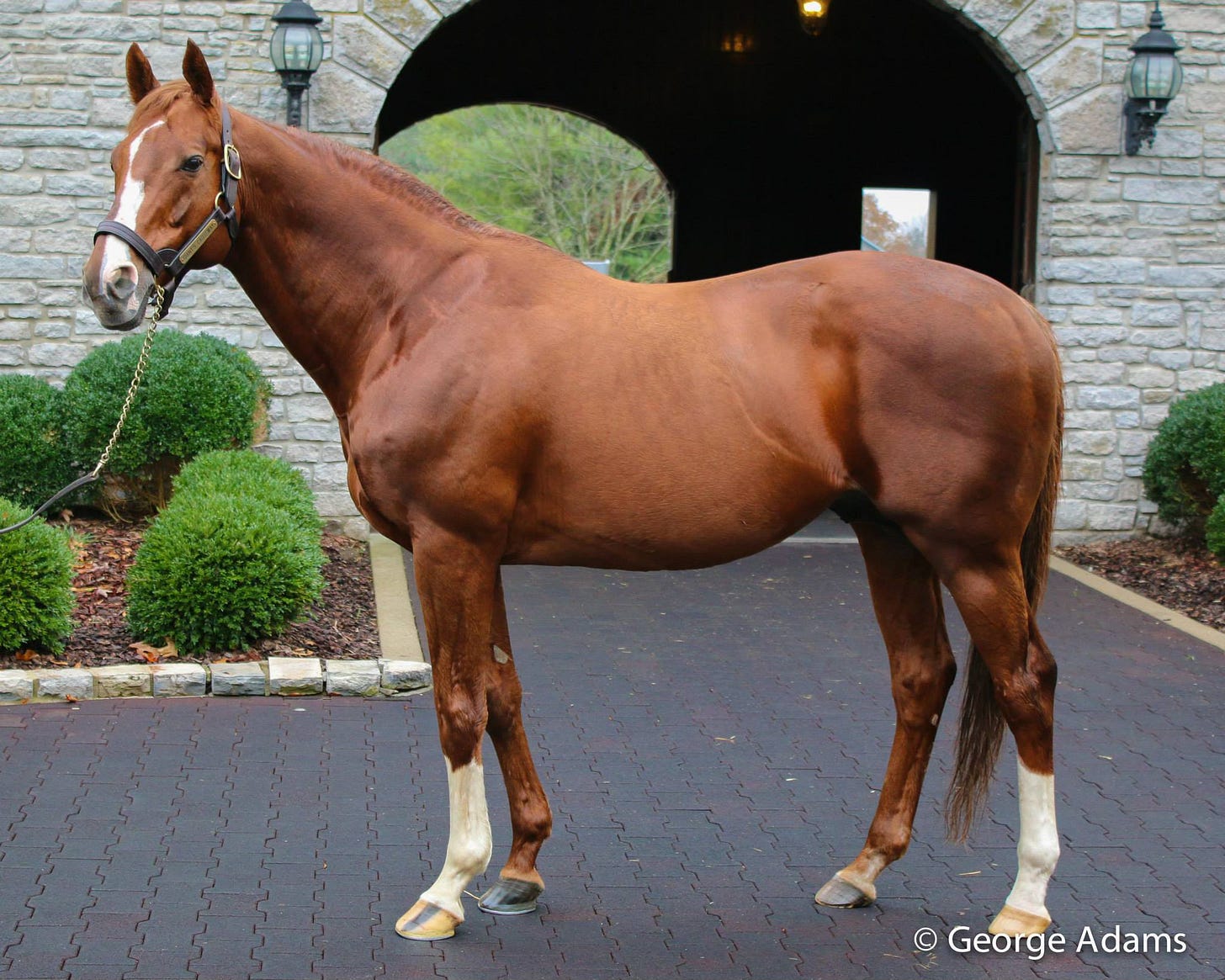
The dam of Giant’s Causeway and Fabulous was a multiple graded stakes-winning mare named Mariah’s Storm, who was purchased by Coolmore for $2.6 million back in 1996 while carrying Giant’s Causeway (her first foal). This pales in comparison to the $8 million that Coolmore spent for Delacroix’s multiple Eclipse Champion dam Tepin in 2017 while she was carrying her first foal (Delacroix is her fourth and, sadly, final foal) — but given the success each’s progeny attained on the racetrack (and then in the breeding shed), there is no doubt that Coolmore considers it all money well spent.
The four G1s that Delacroix and Scandinavia have collected between them this year are some of the eighteen so far procured by Aidan O’Brien’s trainees. Of the remaining fourteen, six more were won by Coolmore homebreds Henri Matisse (whose dam was purchased by Coolmore for the equivalent of approximately $8 million back in 2013), Lake Victoria (whose dam was sourced by Coolmore for the equivalent of approximately $2.9 million in 2017), Lambourn (whose dam was a $500,000 yearling auction purchase by Coolmore) (x2), and Whirl (x2). Three more of the Ballydoyle G1s come courtesy of the apparently privately purchased Los Angeles, Jan Brueghel and Precise (all bred by entities with close ties to Coolmore/Ballydoyle). And the final five G1s have been won by Camille Pissarro, Minnie Hauk (x3) and Diego Velazquez, each of which was a public auction yearling purchase for the approximate equivalents of $1.5 million, $1.9 million, and $2.8 million, respectively.
These yearling purchases were all made at European sales (another black-type winner for these connections this past weekend, the 2YO filly Diamond Necklace, was a yearling auction purchase for approximately $1.8 million last year), and they reflect a consistent pattern for Coolmore of spending huge sums for what they deem to be the most choice yearlings — most typically by their own stallions.1
These patterns are reflected in the stallion roster at Coolmore Ireland, which features six homebreds (Auguste Rodin, Churchill, City of Troy, Gleneagles, Henry Longfellow and Saxon Warrior), and eight yearling auction purchases that went on to race for Coolmore/Ballydoyle (Australia [~$883k yearling auction purchase], Blackbeard [~$378k], Camelot [~$875k], Footstepsinthesand [~$296k], Little Big Bear [~$377k], Paddington [~$486k], St. Mark’s Basilica [~$1.667 million], and The Antarctic [~$1.07 million]). That total of fourteen stallions dwarfs the remaining handful, which features a pair of private purchases from affiliated entities in Holy Roman Emperor and Sioux Nation, two more which saw a portion purchased during their racing careers in No Nay Never and Starspangledbanner, and then the special case of Wootton Bassett, who was acquired relatively recently from France for huge money as a made stallion.
Clearly, this tactic has proven successful for Coolmore, and already in 2025 they have spent €2.3 million for the Arqana sale-topper by Wootton Bassett, plus another €1.2 million there for a son of Camelot, with most of the European yearling sales still to come.
The question that this begs, though, is why have the Coolmore yearling purchases (and homebreds, for that matter) not had the same success in the U.S. as they have in Europe?
At least part of the answer — and, to be fair, likely a large part — is no doubt due to the uniqueness of Aidan O’Brien’s training genius, and the facilities at Ballydoyle. But still, with the likes of Bob Baffert, Todd Pletcher, Steve Rasmussen, Wesley Ward and now Chad Brown handling the majority of Coolmore’s American runners, it’s not like those horses aren’t in the best of hands.
Another part of the answer surely stems from pure numbers — Ballydoyle houses a new crop of over 100 juveniles each year, while the number of Coolmore-owned 2YOs in the U.S. is far below that in a season. While that exact number isn’t public information, the impression is that even on percentages, rather than raw numbers, the U.S. division has to be under-performing compared to their Irish counterparts.
In any event, the disparity is glaring, as there is not a single homebred among the fifteen stallions on the Coolmore America roster at Ashford, and only two were purchased by Coolmore before their racing careers: Mendelssohn was a $3 million yearling (although American-bred, purchased at Keeneland, and having scored his G1 in the Breeders’ Cup Juvenile Turf here, Mendelssohn was trained at Ballydoyle), and Munnings was a $1.7 million 2YO in-training buy (trained by Pletcher).
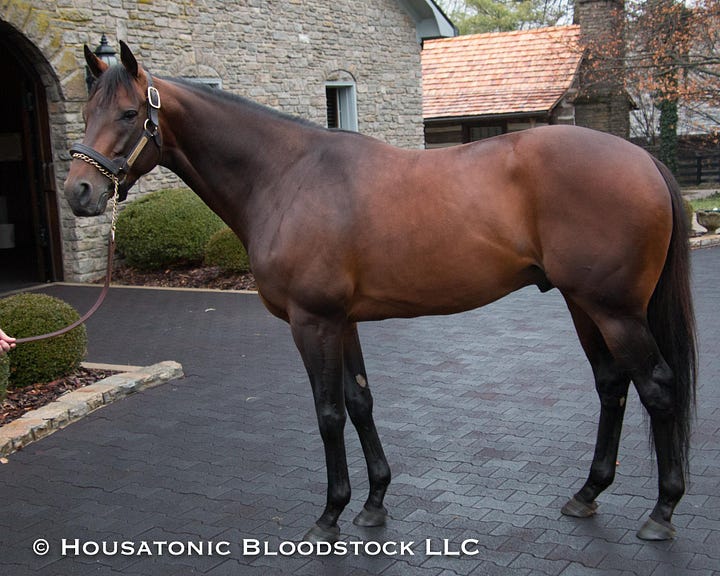
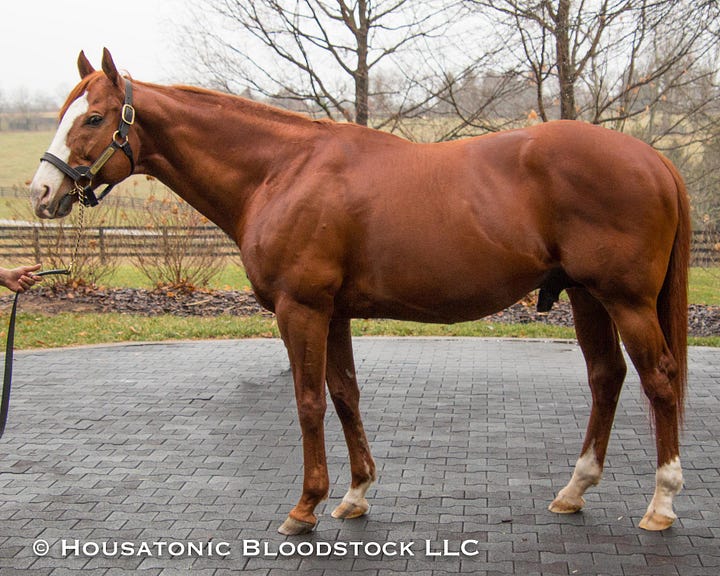
Arguably you could put an asterisk next to Justify’s name, as Coolmore were rumored to be very interested in him at the yearling sale where he brought $500,000 from the WinStar group that raced him, but their vet supposedly failed him due to stifle OCDs. Justify also represents the fourth successive generation of his male-line to stand here, following his sire Scat Daddy, his grandsire Johannesburg, and his great-grandsire Hennessy (the next sire in the line, the great Storm Cat, stood at Overbrook Farm, but his sire Storm Bird was one of the original Coolmore America stallions at Ashford).
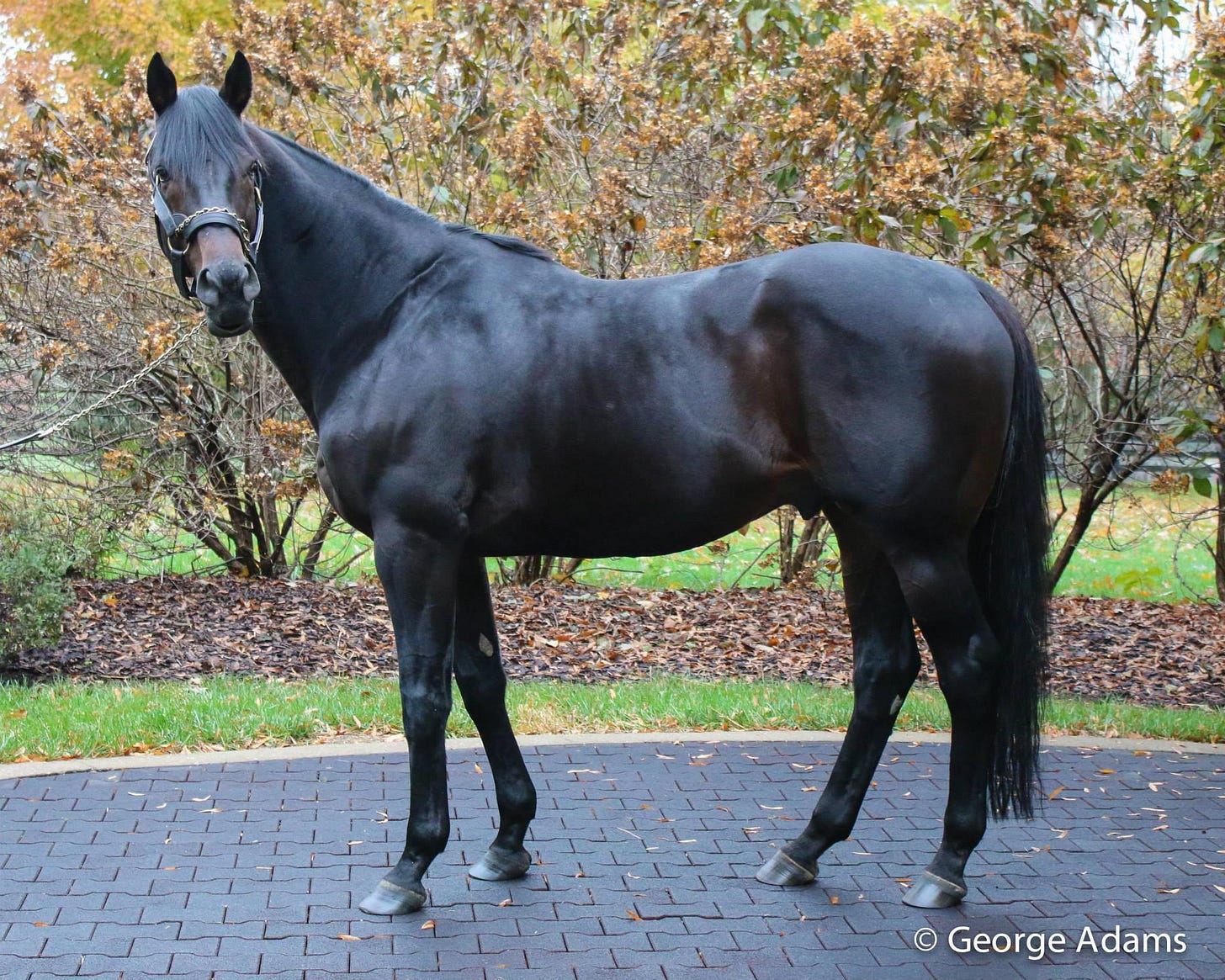
But even so, the stallions on the current Coolmore America roster that were sourced prior to their racing careers are a very small minority.
This number will increase by one in 2026 when reigning Eclipse Champion 3YO Sierra Leone, winner of the 2024 Breeders’ Cup Classic and the 2025 Whitney, retires to the farm. Sierra Leone, trained by Chad Brown, was a $2.3 million purchase at Saratoga as a yearling, and is a son of the hottest young sire in the U.S., Gun Runner. Sierra Leone has now earned over $7 million on the track, and seems destined to stand for something close to a six-figure stud fee upon his retirement. (Coolmore America will be home to at least two other new stallion prospects in 2026, Coolmore having bought into both ‘23 Eclipse Champion 2YO Fierceness and this year’s Preakness winner Journalism during their racing careers — though conceivably Journalism could run again in ‘26 as a 4YO and retire for ‘27.)
Coolmore has raced just two other stateside graded stakes winners in 2025: Hall of Fame was a $1.4 million yearling purchase at the same Saratoga sale where Sierra Leone was bought and is also by Gun Runner, he won the G3 Mineshaft for trainer Steve Asmussen this spring, but has since been leased to new connections; and Capture the Flag, a homebred by Quality Road for Joseph Allen that was bought into privately by Coolmore prior to his racing career and who won the G3 Mac Diarmida going long on the turf earlier this year for Pletcher, and who does not fit the mold of a Coolmore stallion prospect.
None of this has stopped Coolmore from spending similarly stratospheric amounts on U.S. yearlings. In 2022 they spent at least $9,210,000 on nine yearlings (including in various partnerships), of which Sierra Leone and Hall of Fame were the two most expensive; in 2023 the number was $6,585,000 for at least seven (though, interestingly, at least four of the five most expensive were sent to Ballydoyle, including the $1.8 million Into Mischief colt Bernard Shaw, who was G2-placed at 2YO, the $1.25 million Gun Runner colt Gun Carriage, a maiden winner, the $1.2 million Into Mischief colt Jousting, who was unplaced in two starts, and the $550,000 Tiz the Law filly Medici Venus, who has a maiden win from eleven starts. The pick of this crop would be the G2 Louisiana Derby winner Tiztastic, by Tiz the Law, who has earned about $1.6 million for Asmussen after being purchased for $335,000 as a yearling.)
In 2024, Coolmore bought at least nine yearlings at auction in the U.S. for $9,850,000. These included Gun Runner colts for $1.9 million, $800,000 and $750,000, a Charlatan colt for $1.4 million, a Curlin colt for $1.3 million, and million-dollar colts by Not This Time, Maxfield, and Into Mischief, respectively. Not a single one of these nine has reached the races yet, and only two have even been named: the Maxfield colt (who was sent to Ballydoyle) is known as Shaftesbury Avenue, while the priciest Gun Runner colt came with the name Paladin. Several of the others are on the worktab in New York, so likely for Chad Brown (worth noting, here, that Sierra Leone didn’t make a racetrack debut until November of his 2YO season, so there’s still time for these), and there are interesting homebreds working in California for Bob Baffert (a colt by Quality Road out of Gamine, she an Eclipse Champion who was an $8 million broodmare buy by Coolmore, and then an Into Mischief filly out of homebred G1 winner As Time Goes By, among them).
It appears that the only two Coolmore-owned juveniles of 2025 to have run so far are homebreds: the Baffert-trained colt Plutarch (by Into Mischief out of the Eclipse Champion and $6 million Coolmore broodmare buy Stellar Wind, Plutarch has been 2nd in both his starts, including the G3 Del Mar Juvenile Turf) and the Kenny McPeek-trained filly Soloist (by Into Mischief out of G1 winner Daddys Lil Darling, who was trained by McPeek and purchased by Coolmore as a broodmare for $3.5 million; Soloist was a debut winner on turf at Ellis then 5th in a stakes at Kentucky Downs).
Coolmore has stepped up their American auction participation even further in 2025, with at least seventeen yearlings purchased for over $20 million. Of the eight of these yearling colts bought for a million dollars or more, five are by Into Mischief ($4.1 million [the Saratoga Sale topper], $2 million, $1.5 million, $1.25 million, and $1.2 million), and two are by Gun Runner ($3.3 million [the Keeneland Sale topper] and $1.55 million). The eighth is by their recently-deceased stallion Uncle Mo, at an even million.
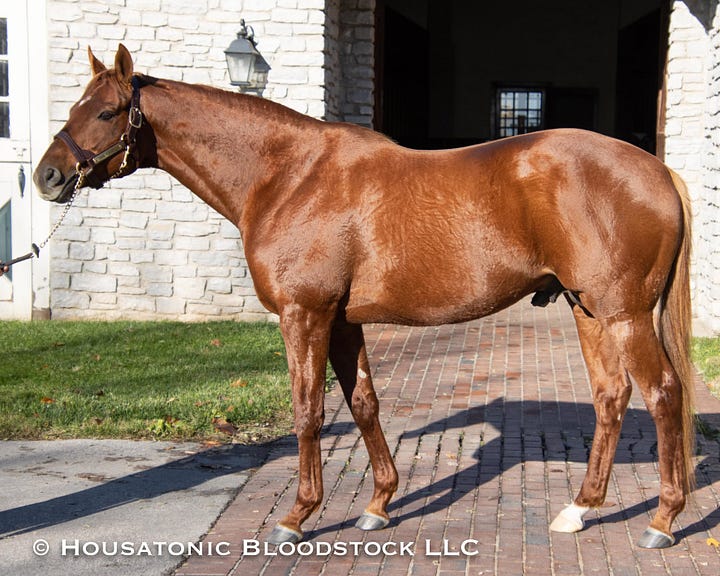
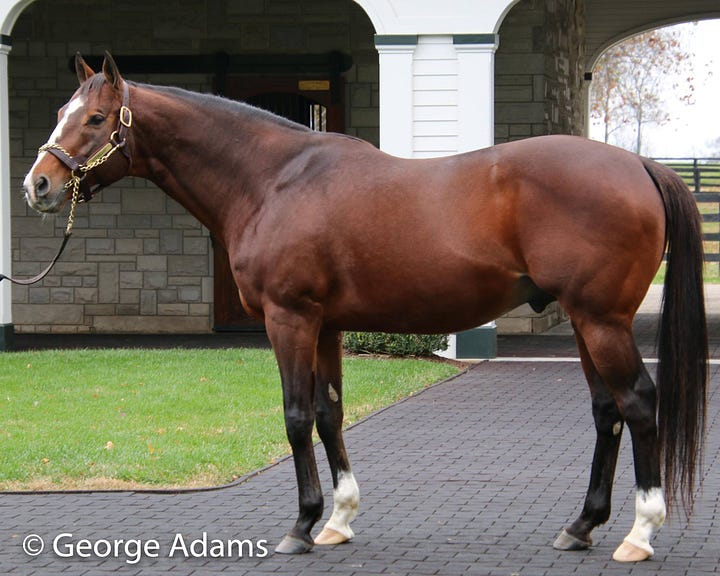
Obviously, Coolmore has had some success with Gun Runner already (see Sierra Leone, and to a [much] lesser extent, Hall of Fame), so their return to that well makes sense. And although they have yet to campaign a successful runner by Into Mischief, he is a six-time leading U.S. sire and leading juvenile sire, and his sons have proven popular and successful at stud, so it follows that Coolmore would continue to pursue his sons as future stallion prospects (especially since they stand one of his earliest stallion sons, and still his most successful, in Practical Joke, as well as Practical Joke’s son Domestic Product — though they campaigned neither themselves). And those two 2YOs of ‘25 that have already run stateside for Coolmore are both by Into Mischief, too, which likely doesn’t hurt. (Willing to bet, also, that this bunch stay here and don’t join Aidan O’Brien at Ballydoyle like the last couple of high-priced Into Mischief prospects.)
All of which is to say, given their track record and continued commitment, it seems foolish to bet against Coolmore coming up with some new U.S. stallion prospects from their homebreds and yearling purchases sooner rather than later!
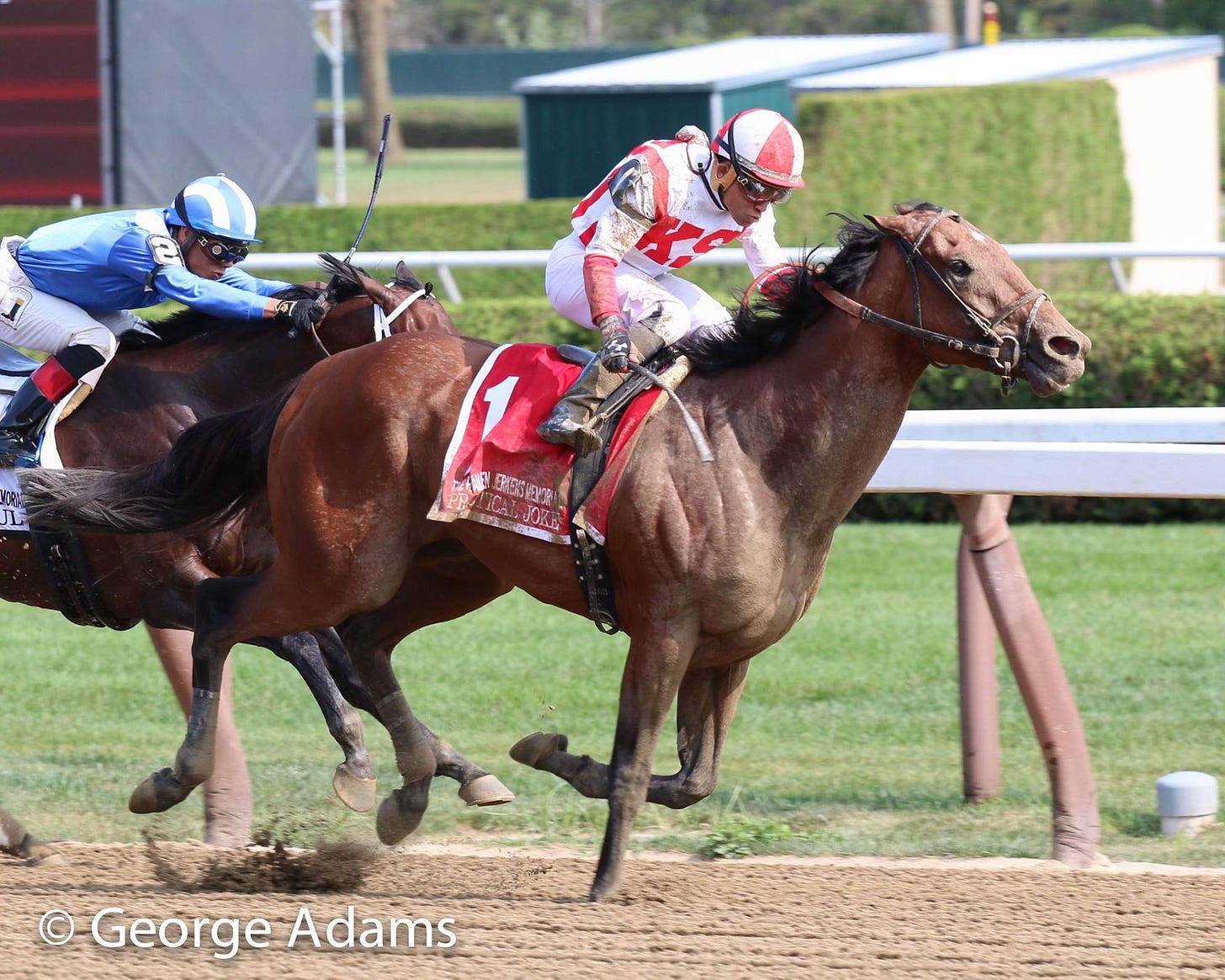
In some cases, it is likely that these yearlings are the results of foal shares and Coolmore gets to bid with “50 cent dollars,” as it were. But that does not change the broader point being made.